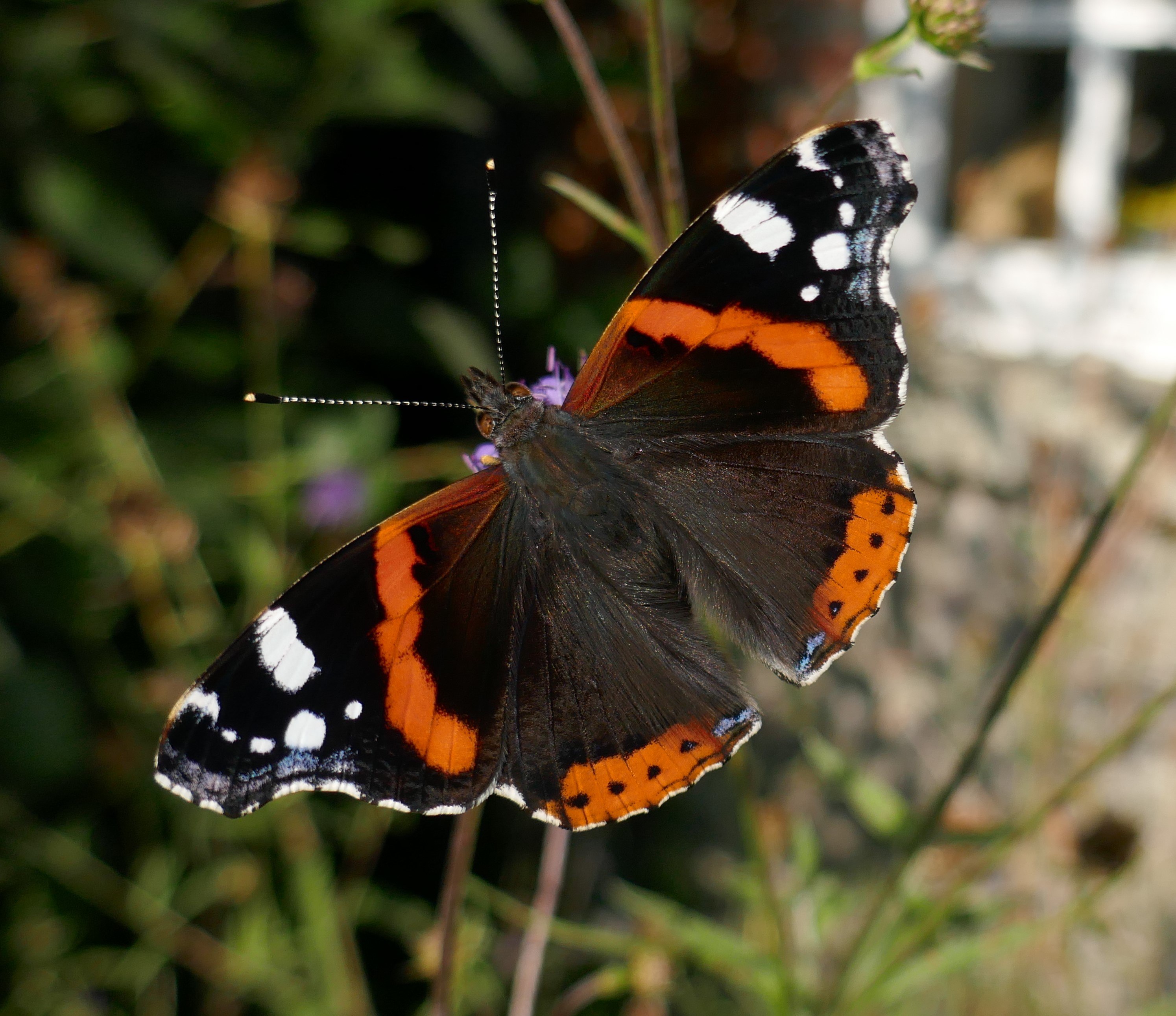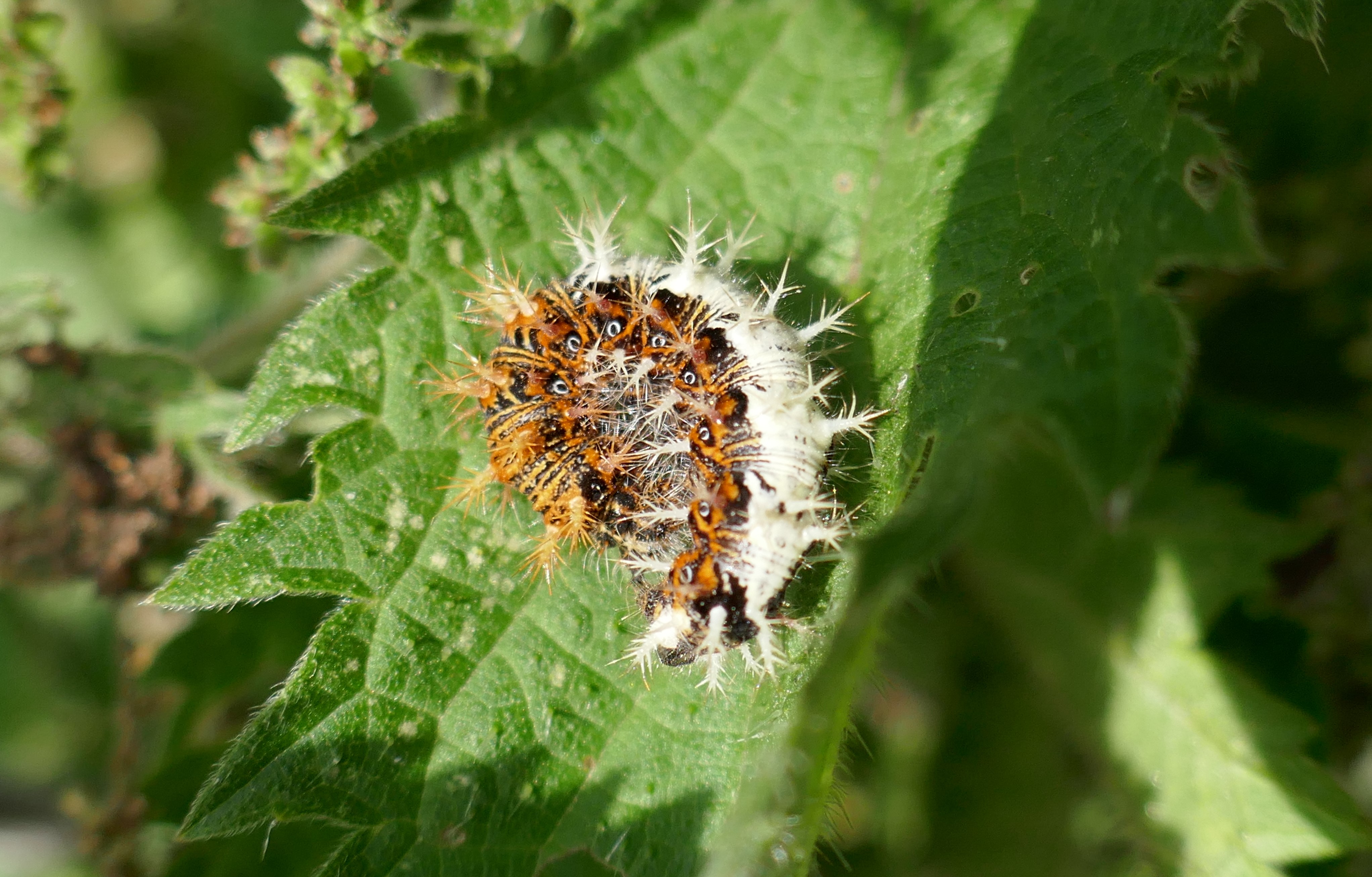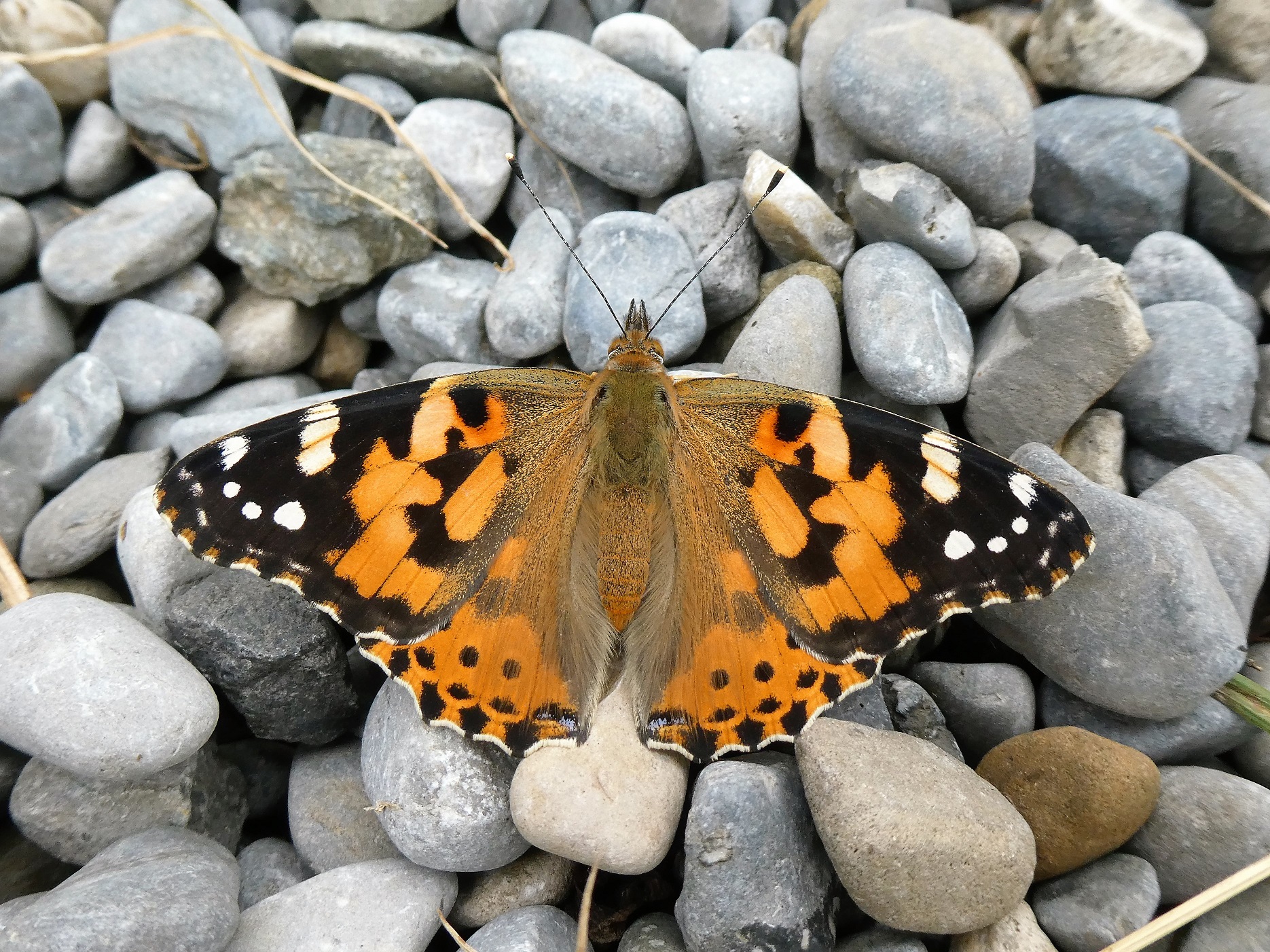I hated school. That sounds bizarre after a career in education, but it is true. School was incarceration, an ordeal to be suffered, in my case, between the ages of 4 and 17.
I have very few positive memories of my years as a primary and second-level student. Endurance not fulfillment was the objective. Happiness was sought elsewhere.
Sunshine and butterflies and birds and wildflowers, the great ingredients of a countryside yet to be sullied by chemical fertilisers, were the antidote to school and much else.
School ends when summer begins and begins when summer ends. And the summer was the time of happiness. On the last day of school each year, always a half-day, I sprinted not home but to the fields where so much life was taking place. Fox cubs gamboled in June’s buttercup meadows, Chaffinches crafted their very beautiful nests in shrubs and Orange-tips, looking tropical against the emerald verdure, dashed along rides and hedges.
The former paradise close to my childhood home lies buried beneath the concrete of monotonous housing, roads, industrial estates, a massive shopping centre, and Tallaght Hospital. Staring into the wet dark of January from an upper floor room in the hospital two years ago, I ruminated at the grim transformation of the area, from happy farmland where Bord na gCapall had its leafy, wooded grassy home to the dark hulls of massed buildings, dimly outlined by the orange street lamps.
June is not really a school month; in primary school, June means school trips and for second level it’s a holiday month unless you’re caught for state exams. For me, June was Friday. July was Saturday; the school became a distant memory, and summer eternal. August was Sunday. As August aged, the ache in my stomach intensified. September was Monday.
The sun and glories of summer fade rapidly during September. Butterfly abundance diminishes before crashing at or even before the month’s decease.
Some years evoke the beguiling illusion that summer will be a permanent fixture. The summer of 1976 was a standout. I remember the hot sun, a life lived outdoors, and masses of ladybirds, their cheery red, black-dotted carapaces a fun sight. But the Mediterranean summer vanished, drowned by the retaliatory downpours of September, all the butterflies over for the year, overnight. No lead-in. No Ode to Autumn. No illusion that ice cream weather could extend into school time.
In fact, while my classmates and I stared in awe at the ferocity of the rain in September 1976, we were observing the end of summer for the rest of the decade.
Autumn held some pleasures. Before the dark, short days ushered in winter, there were Small Tortoiseshells, Peacocks, Red Admirals, and Speckled Woods to enjoy. In fact, in some years, like 2022, there were so many autumn Red Admirals and Speckled Woods I really imagined that winter was abolished and that the swallows wouldn’t return to Africa. A few days of cloud, heavy rain, and violent wind tore down that dream along with the leaves.
September saw me scouring the bleached grasslands and bedraggled hedges for lingering symbols of summer. I discovered a curiously late blooming bank of bramble, occupied with final fling Red Admirals, year after year. Annoyingly, the exquisite scarlet and black creatures often perched out of reach, like a gleaming fruit that gleams all the more when unattainable. When my pocket money did extend to a butterfly net from the newsagents (there was a recurring conflict in my heart: HB Dracula ice-pop or net) the net was often impaled then ripped among the treacherous thorns or, more maddening, it detached from the bamboo and was marooned high on the bush. On occasion, a butterfly would heap the humiliation by entering the stranded net tented over a spray of the pink blooms to sup on the nectar. Why, I wanted to know, did everything always conspire against me?

Another winter-beating strategy was to bring summer indoors. One autumn I caught a newly hatched Red Admiral and attempted to overwinter it in a shoe box stowed below the stairs. I read, in one of my few butterfly books, that Red Admirals hibernate in central Europe. So why not here? This hibernation information is not correct, but it was a while before I realised that.
My strategy to prepare my pet for a lengthy overwintering phase involved sitting in the front room, TV on but lights out, a piece of cut fruit, usually peach, in my hand with my Red Admiral feeding on the fruit’s sweet juice. Seated siblings were under sit-still orders. This worked quite well. It taught me patience and stillness and afforded close observation over a lengthy period. I noticed how it sometimes lodged its feet in the exposed parts of the fruit, and gracefully dipped its antennae towards its often-stationary proboscis, ‘smelling’ its nourishment. Sometimes it dabbed its proboscis impatiently, possibly because the juice dried or hardened.
Newly hatched autumn Red Admirals spend several days feeding and will become quite docile. What happens when they are ‘full’ is not, as I believed, a long winter sleep but a long migration flight. After being tame for some days, my pet duly became restive, flying across the room to the TV screen. I turned the central heating off to simulate winter cold but parental interference kicked in when ice formed on the inside of the windows. Containment in the shoebox did not create slumber. Even in the pitch dark, the butterfly tossed its migration-ready self against the cardboard and never settled, eventually perishing, to my bemusement and grief.
During my formative years in the 1970s and 1980s, the talk was not about global warming but contrarily, a new ice age was expected. The rotten weather from 1977-1981 seemed to support this idea, and aside from 1983, 1984, and outstandingly, 1989, the 1980s had miserably wet ‘summers’, especially the three years following 1984.
The climate has certainly been feeling the increased heat since 2000, and we are seeing the response of nature to this warming trajectory. The colonisation and rapid expansion of the Comma butterfly in Ireland are believed to derive in part from the warming climate and associated causes, such as fossil fuel burning contribution to the nitrogen enrichment of soils, leading to healthier, more nutritious Stinging Nettles for the Comma’s larvae. The rising air temperatures allow the Comma’s solitary larva to warm up enough to digest protein-rich nettle. The solitary habit of the caterpillar is speculated as one of the factors telling against successful breeding here in the past because, unlike social caterpillars, the Comma caterpillar does not gather in a cozy gregarious heat ball the Peacock and Small Tortoiseshell caterpillars form.

The Comma is breeding here twice a year, with a second brood flying well into October, and in good numbers, enjoying the season’s delights, especially blackberries, ivy nectar, and overripe orchard windfalls.
These well-fed Commas then identify a secluded sylvan retreat to see out the winter.
But there is a butterfly that is really excelling itself at extending summer. For over twenty years, Frank Smyth, who observes butterflies along parts of the north Dublin coastline, has chronicled the radically altered circumstances of the Red Admiral in the Howth area.
In some milder coastal areas, nettles do not die back, and egg-laying late in the year has been observed many times since 2000 on Howth Head, County Dublin by Frank. He has also observed larvae throughout winter and spring and expects to see Red Admirals there every time he looks for them. In November 2021, I observed breeding behaviour inland in County Meath, 34 km from the coast. If recorders check nettles for eggs when they see the adult in late autumn, we may discover it has become a resident species over more of this country.
It is worth describing how the Red Admirals breeding in Howth responds to the low temperatures there from November to March. Frank Smyth’s observations show that the egg lasts a good deal longer than usual, up to ten weeks, and that the larval stage takes months to complete. This ability to prolong its development cycle enables the species to survive the coldest months and allows the adult to emerge when conditions are more favourable.
This prolonged breeding cycle over the winter has also been observed in Sussex, on England’s south coast, where Red Admiral eggs laid late in the year took 65-90 days to hatch (David Harris pers. com. per Frank Smyth). The Howth Red Admirals appeared as adults in late April and May (Frank Smyth 2018 pers. com.). In Southern England, eggs hatching in late November and early December produced adults by the third week in May of the following year (Eeles 2019). The offspring of those that migrated to breed in the warmer Mediterranean region emerge as adults in March and April (Thomas and Lewington 2014).
Remarkably, on March 7th, 2021, Frank Smyth observed egg-laying at Howth on small, unshaded south-facing nettles. Frank believes the female he saw laying her eggs to be a migrant, given he saw no other adults in the area. This is likely to be the earliest egg-laying recorded in Ireland to date by any species, and a fascinating example of what this beautiful butterfly is telling us about changes in our world.
This is a developing story. Frank has recorded good numbers of Red Admirals in Howth throughout autumn and on November 18th, 2022 he found 10 Red Admirals, some laying eggs, and a Painted Lady. It is late in the year for all (or perhaps for any) of these to be home-grown. They might be migrants from warmer parts of Europe, assisted on their journey by recent mild southerly winds which have been followed in recent days by gentle airflows. The still-lush nettles and flowering ivy give them what they need for breeding and feeding.
This is a new development. Red Admirals leave Ireland during autumn. That is well established. I have observed this myself, as have many others, especially birdwatchers along the south coast who see a large build-up of the butterfly in October, within sight of the sea, and then the butterflies suddenly vanish. Radar has also picked up southward migration in autumn, from England.
But inward Red Admiral migration in late autumn into Ireland was unknown until now. Frank’s observations of their development overwinter in recent years suggest that the Red Admirals laying now will be successful breeders. Intriguingly, there was a single, freshly minted Painted Lady with them. A fellow migrant, this species should not be here in late November, according to our knowledge of this butterfly.
The habits of these species are changing quickly, but these changes are not uniform. Most of our Red Admirals still leave in autumn, but a few now remain and, it now appears, some even migrate here to breed. The species is showing flexible responses to changes in the climate. It is this ability to respond to change that makes the Red Admiral a successful butterfly, and in this regard, it has some vital advantages. It is cold-hardy, which allows it to remain active in cool weather as long as it is sunny, and can fly in dull weather as long as it is mild. It is highly mobile, having the ability to abandon unsuitable areas and reach a habitat containing healthy foodplants hundreds of kilometers distant. It breeds on a robust plant that occurs in a range of habitats right across Europe, temperate Asia and north-west Africa. It is not capable of over-wintering as an adult butterfly, like the Peacock, but it can take shelter and rest for several days, possibly for weeks, without feeding. The immature stages are able to prolong their development times in cooler conditions, a feature crucial for successful development during an Irish winter and spring.
There are species that our warming climate will not suit and there is some indication that some of our butterflies are struggling to cope with changing temperatures and rainfall patterns. There are winners and losers in circumstances of change. But summer can still be found at Howth, even at the end of November, and despite our queasiness at climate-related changes, including changes that bring pleasure, the Red Admiral testifies to the resilience and adaptability of some of our butterflies.

Key References
Eeles, P. (2019) Life Cycles of British & Irish Butterflies. Pisces Publications, Berkshire.
Harding, J. (2016) The Comma (Polygonia c-album (L.)) (Lepidoptera: Nymphalidae) breeding in Ireland, with notes on larval development. Irish Naturalists’ Journal 35: 63-65.
Harding, J. (2021) The Irish Butterfly Book. Self-published, Maynooth.
Smyth, F. and Nash, D. W. (2008) Overwintering of the Red Admiral butterfly (Vanessa atalanta (L)) on the Howth Peninsula, County Dublin. Irish Naturalists’ Journal 29:81-86.
Thomas, J. and Lewington, R. (2014) The Butterflies of Britain and Ireland. (Revised edition) British Wildlife Publishing, Dorset.

